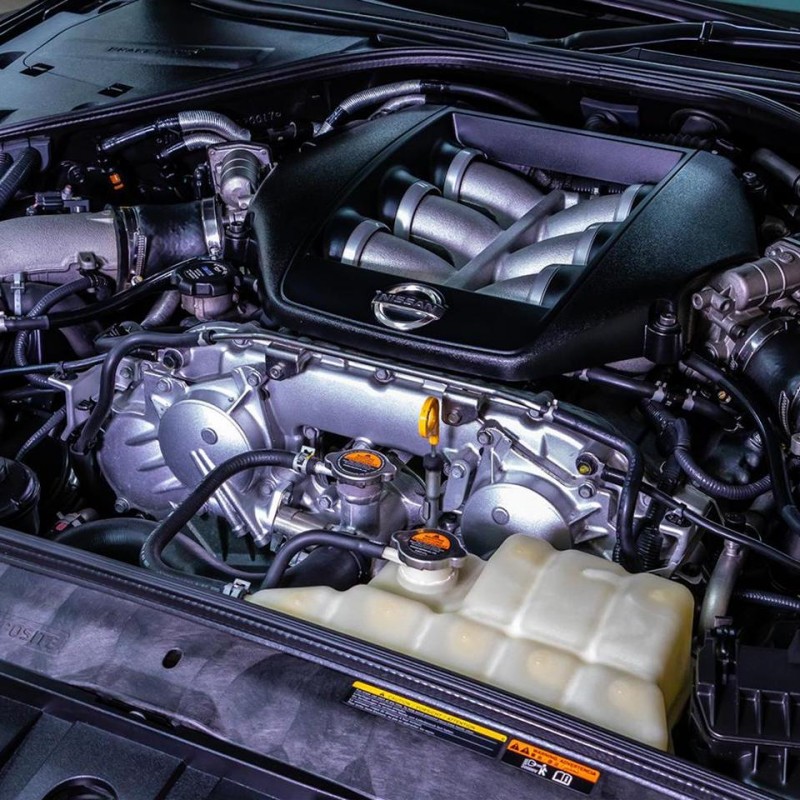A sputtering engine, jerky acceleration, and illuminated check engine light – these are all telltale signs of a common car problem: engine misfire. It occurs when one or more cylinders in your engine aren’t combusting fuel properly, causing a loss of power and a rough ride. While engine misfire can be frustrating, it’s not necessarily a reason to panic. In many cases, it’s a fixable problem you can address yourself or with the help of a mechanic.

This guide will equip you with the knowledge to diagnose and potentially fix a misfiring engine. We’ll delve into the common causes of misfire, guide you through the troubleshooting process, and explore solutions to get your car running smoothly again.
Understanding Engine Misfire
An internal combustion engine relies on a precise balance of air, fuel, and spark to function correctly. During normal operation, the air-fuel mixture is drawn into the cylinder, compressed by the piston, ignited by the spark plug, and then expelled as exhaust. In a misfire scenario, this process is disrupted in one or more cylinders. This can happen due to various reasons, including:
- Ignition system problems: Faulty spark plugs, worn-out ignition coils, or damaged spark plug wires can prevent a proper spark from igniting the air-fuel mixture.
- Fuel system problems: Clogged fuel injectors, a dirty fuel filter, or a failing fuel pump can restrict or disrupt fuel delivery to the cylinders.
- Sensor issues: Faulty sensors like the oxygen sensor or mass airflow sensor can send incorrect signals to the engine computer, leading to improper air-fuel mixture.
- Vacuum leaks: Leaks in the intake manifold or vacuum hoses can allow unmetered air into the engine, causing a lean air-fuel mixture and misfire.
- Mechanical problems: Worn valve springs, damaged valves, or a faulty head gasket can cause compression loss, hindering proper combustion.
Diagnosing Engine Misfire
Before diving into repairs, it’s crucial to diagnose the cause of the misfire. Here’s a step-by-step approach to help you identify the culprit:

-
Check the Check Engine Light: Most modern cars come equipped with a check engine light that illuminates when the engine computer detects a malfunction. While the light doesn’t pinpoint the exact issue, it can provide valuable clues. You can use an OBD-II scanner (a tool that reads diagnostic trouble codes) to retrieve specific codes related to the misfire. Researching these codes online or consulting a repair manual can offer valuable insights into the potential cause.
-
Listen for the Misfire: Engine misfire often comes with a distinct sound. A rough idle, sputtering during acceleration, or popping noises from the exhaust can all indicate a misfire. The specific sound can sometimes offer hints about the source of the problem. For instance, a popping sound from the exhaust might suggest a lean air-fuel mixture.
-
Visual Inspection: Open the hood and visually inspect the engine compartment for any obvious signs of trouble. Look for loose or disconnected spark plug wires, damaged vacuum hoses, or components that appear worn or out of place.
Fixing Engine Misfire: DIY Solutions
Once you’ve diagnosed the cause of the misfire, you can attempt to fix it yourself depending on your mechanical expertise and the severity of the problem. Here are some common DIY solutions:
-
Replace Spark Plugs: Spark plugs are a common wear-and-tear item and a frequent culprit behind misfires. Check your owner’s manual for the recommended spark plug type and replace them according to the scheduled maintenance intervals. Ensure proper spark plug gap using a gapping tool.
-
Clean Spark Plug Wires: Over time, spark plug wires can become dirty or corroded, hindering proper spark transmission. Clean the spark plug wire boots with a wire brush and replace them if they’re cracked or damaged.

-
Replace the Air Filter: A clogged air filter can restrict airflow into the engine, leading to a lean air-fuel mixture and misfire. Refer to your owner’s manual for recommended air filter replacement intervals and change it if necessary.
-
Clean the Throttle Body: The throttle body controls airflow into the engine. A dirty throttle body can cause idle problems and contribute to misfires. You can attempt to clean the throttle body with a throttle body cleaner following the manufacturer’s instructions (consult your car’s repair manual for specific steps).
Always consult your car’s repair manual before attempting any repairs, especially those involving the fuel system or electrical components. If you’re unsure about any step, it’s best to seek professional help from a qualified mechanic.
When to Seek Professional Help
If the DIY solutions don’t resolve the misfire, or if you’re uncomfortable performing the repairs yourself, it’s best to seek professional help from a qualified mechanic. Here are some scenarios where professional intervention is recommended:
- Multiple cylinder misfire: If the OBD-II scanner indicates a misfire in multiple cylinders, it suggests a more widespread issue beyond a single spark plug or coil. A mechanic can diagnose the root cause and recommend the appropriate repair.
- Severe engine shaking: A severely shaking engine can point towards a more serious problem like a damaged valve spring or a faulty head gasket. These repairs require specialized tools and expertise best handled by a professional.

- Loss of power: A significant loss of power alongside the misfire indicates a deeper problem affecting engine performance. A mechanic can pinpoint the issue and recommend repairs to restore your car’s power.
- Check engine light stays on: If the check engine light remains illuminated even after attempting DIY fixes, it’s best to have a mechanic diagnose and address the underlying problem.
Preventing Engine Misfire
Proactive maintenance is key to preventing engine misfire. Here are some essential practices:
- Regular maintenance: Follow your car’s recommended maintenance schedule, which includes timely oil changes, spark plug replacements, and air filter changes. These routine services keep your engine running smoothly and prevent potential problems.
- Quality fuel: Using high-quality fuel ensures your engine gets the clean fuel it needs for proper combustion. Avoid using low-grade gas, which can cause deposits and contribute to misfires.
- Driving habits: Avoid aggressive driving habits like rapid acceleration and sudden braking. These can put additional stress on the engine and fuel system, increasing the risk of misfires.
Additional Tips

- Keep a record of maintenance: Maintaining a log of your car’s service history, including oil changes, spark plug replacements, and any repairs, can be helpful for future reference. It can also assist mechanics in diagnosing problems.
- Invest in a good OBD-II scanner: An OBD-II scanner can be a valuable tool for identifying potential problems early on. They are relatively affordable and can provide valuable diagnostic trouble codes to guide you towards solutions.
Don’t Let Engine Misfire Slow You Down
Engine misfire can be a frustrating experience, but with the right knowledge and approach, you can diagnose the cause and get your car back on the road. By following the steps outlined in this guide, attempting DIY fixes where appropriate, and seeking professional help when needed, you can ensure a smooth-running engine and a more enjoyable driving experience.
Remember, preventive maintenance is key to avoiding engine misfire in the first place. Schedule regular servicing, use high-quality fuel, and adopt responsible driving habits to keep your car running trouble-free.



